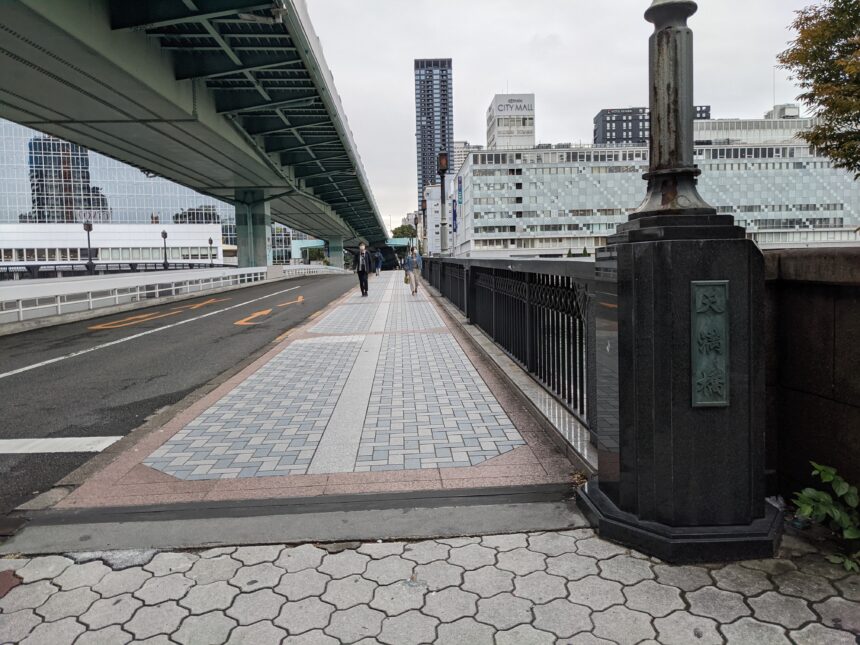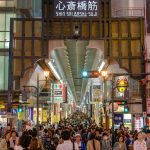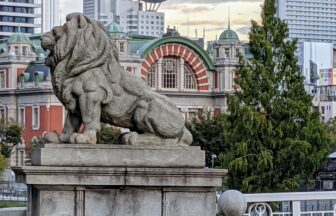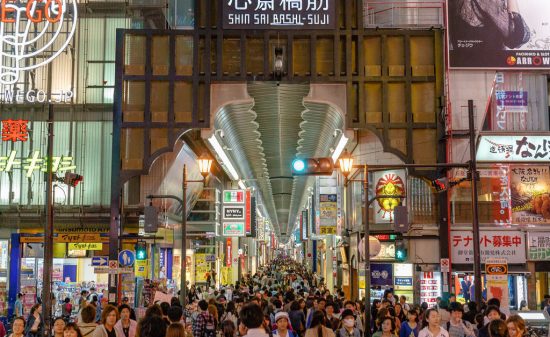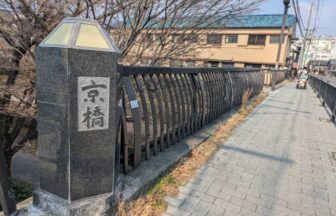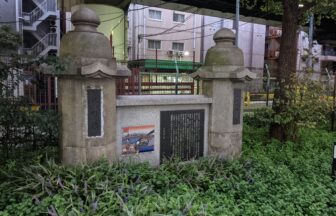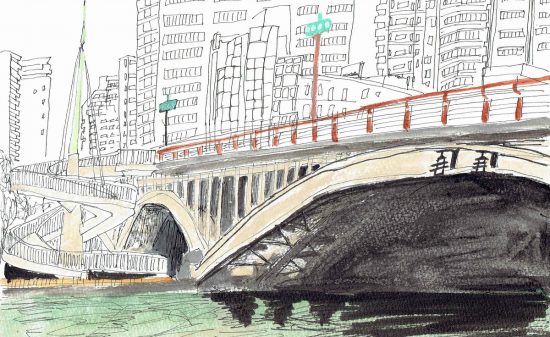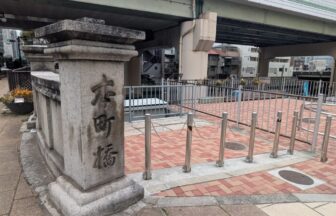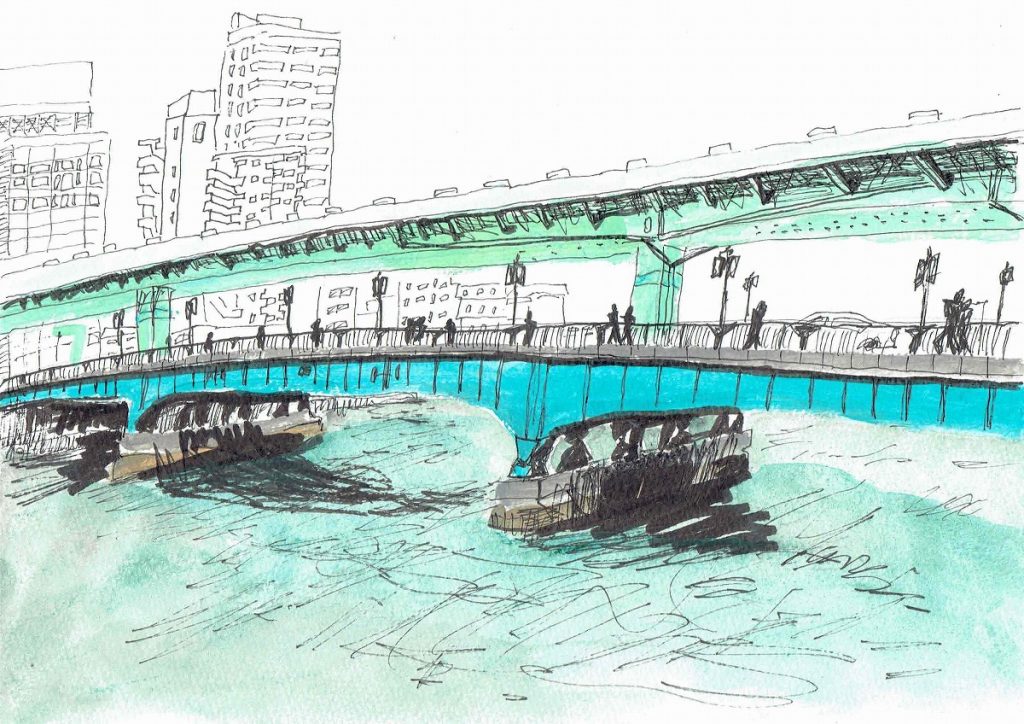
Illustration by Hiroki Fujimoto
Temma Bridge (Osaka City, Kita Ward)
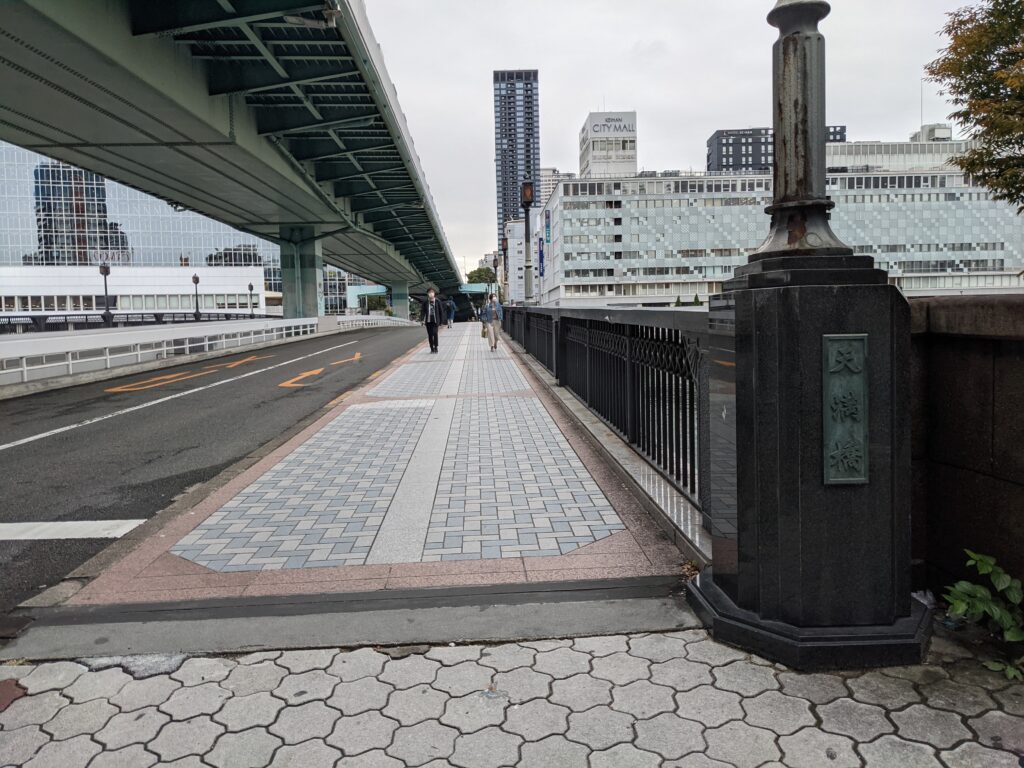
Temma Bridge is one of the “Three Great Bridges of Naniwa,” along with Tenjin Bridge and Namba Bridge. Since the Edo period, it has thrived as a crucial transportation hub. In Osaka, known as the city of “808 bridges,” Temma Bridge was one of only twelve Kōgi-bashi—bridges directly managed by the shogunate—demonstrating its exceptional importance.
Contents
Medieval Period
In the medieval era, a bridge called Watanabe Bridge stood in the area around Tenma Bridge and Tenjin Bridge. This bridge is believed to be the predecessor of the Three Great Bridges of Naniwa. However, after Watanabe Bridge fell into disrepair, no bridge spanned the Okawa River for a long time, making river crossings difficult for people.
According to History of Japan by Luís Fróis, the number of people crossing the river was so large that ferries could not handle the demand. The situation was even more dire for the poor, who could not afford the ferry fares, making river crossings extremely difficult.
A bridge was finally reconstructed during the reign of Toyotomi Hideyoshi. While the exact year of its completion is unclear, records in History of Japan suggest it was built before the construction of Osaka Hongan-ji Temple, meaning it existed before Tenshō 14 (1586). However, whether this bridge was located near the present-day Tenma Bridge remains uncertain.
Edo Period
During the Edo period, Temma Bridge was built one street east of Tanimachi-suji (where it currently stands today). As Osaka rapidly developed as a merchant city, urban planning progressed swiftly, and the Three Great Bridges of Naniwa were officially designated as Kōgi-bashi in Kan’ei 11 (1634).
On the south side of Temma Bridge stood the east and west town magistrates’ offices, while the north side housed construction offices, warehouses, and town official residences. Additionally, the east side of Tanimachi-suji (closer to Osaka Castle) was an administrative district filled with government offices. As a result, many government officials likely used Tenma Bridge for their daily commutes. Among the Kōgi-bashi, Tenma Bridge had a particularly strong connection to government affairs.
However, Tenma Bridge also suffered from repeated flood damage. In the Meiji 18 (1885) Great Flood, about 30 bridges in Osaka were washed away, prompting a reassessment of the city’s flood control measures. But even before that, Temma Bridge had been repeatedly destroyed by floods.
Records indicate that between Tenmei 6 (1786) and Meiji 18 (1885)—a span of 100 years—the bridge was washed away six times. This means that, on average, it sustained major damage every 16–17 years.
In Kyōwa 2 (1802), a flood caused over 35 meters of the bridge to collapse. In Meiji 1 (1868), debris from the Yodo Bridge, which had collapsed upstream, got stuck against Temma Bridge’s piers, forcing authorities to cut the piers to prevent further damage. This was likely a deliberate effort to minimize destruction before accumulated debris could break the bridge entirely.
In general, wooden bridges had a lifespan of around 20 years. However, given Temma Bridge’s frequent exposure to floods and possibly even fires, it is doubtful that it ever lasted the full 20 years without significant repairs or reconstructions.
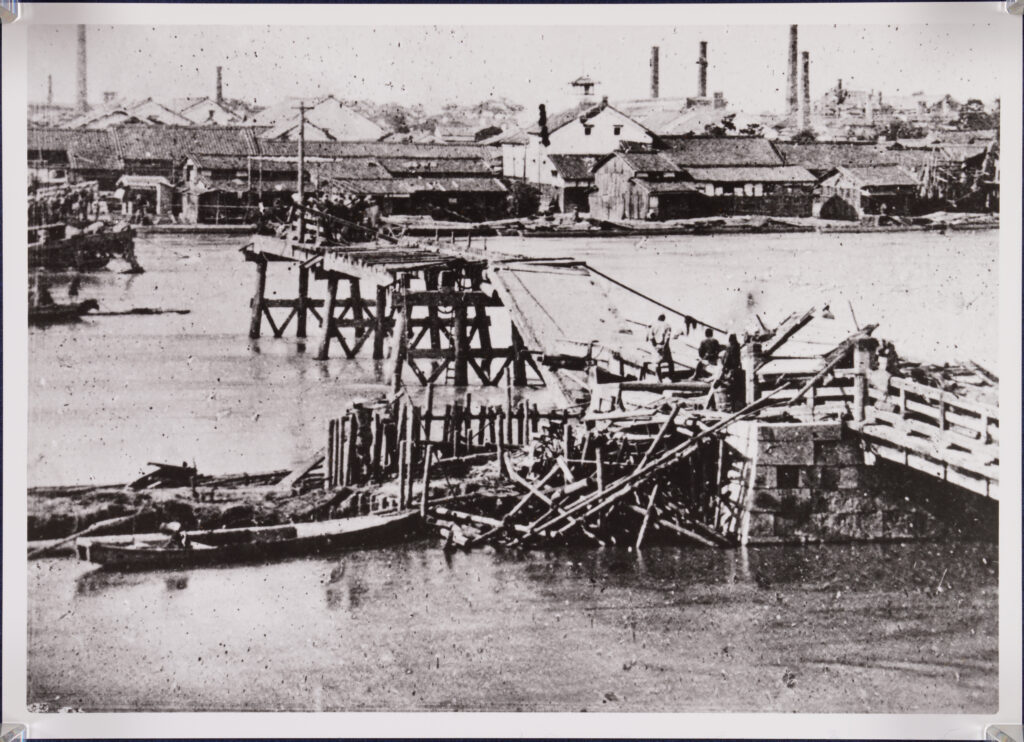
Temma Bridge (Osaka Municipal Central Library)
Temma Bridge in the Meiji Era and Beyond
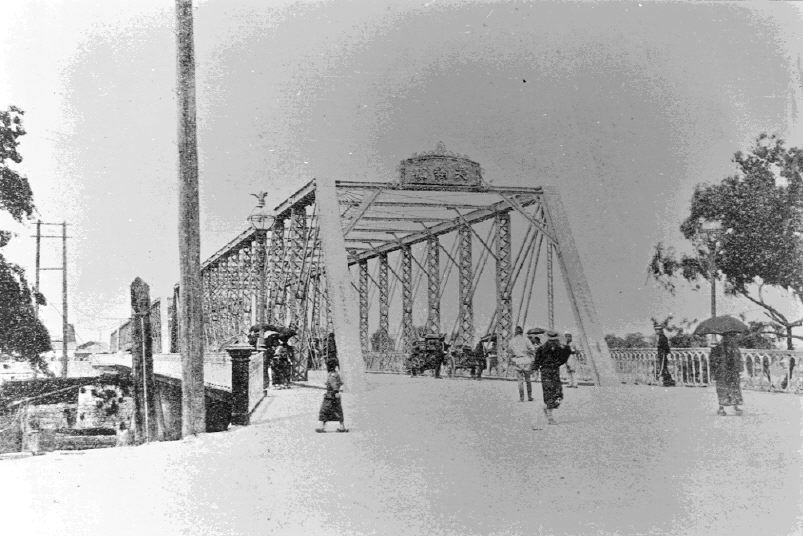
Temma Bridge (Osaka Municipal Central Library)
Rebuilding a bridge that was frequently destroyed was no easy task. After the Great Flood of Meiji 18 (1885), Osaka began replacing many of its bridges with iron bridges to improve durability.
The reconstruction of Tenma Bridge was a significant project, with a total construction cost of 138,000 yen—a considerable sum at the time. The new bridge measured 215 meters in length and 11 meters in width, making it larger than the present-day bridge. The design chosen was a Whipple truss bridge consisting of four spans, each with a span length of approximately 52 meters.
During construction, brick-walled wells were used for the bridge piers’ foundations. However, when workers excavated about six meters deep, they encountered a black clay layer, and groundwater suddenly stopped flowing. In an attempt to dig further, workers manually excavated through the clay, but the moment they broke through, a powerful surge of groundwater erupted. This phenomenon, known as boiling (boiling sand effect), occurs in areas with soft, water-saturated ground or liquefied soil layers. Given that the alluvial layers around Tenma Bridge were thick and geologically complex, this issue arose.
Fortunately, no lives were lost, and the construction continued. However, excavation proved extremely challenging, as some hard sand layers allowed progress of only 30 centimeters per day.
While most of the construction materials used for the bridge were imported from Germany, certain components—including the iron railings, lighting poles, and bridge nameplate—were domestically produced in Japan.
In Meiji 44 (1911), as part of Osaka’s third phase of tramway expansion, a tram-only bridge was built just upstream of Temma Bridge. This project played a crucial role in completing Osaka’s tram network, which was fully operational by Taisho 5 (1916).
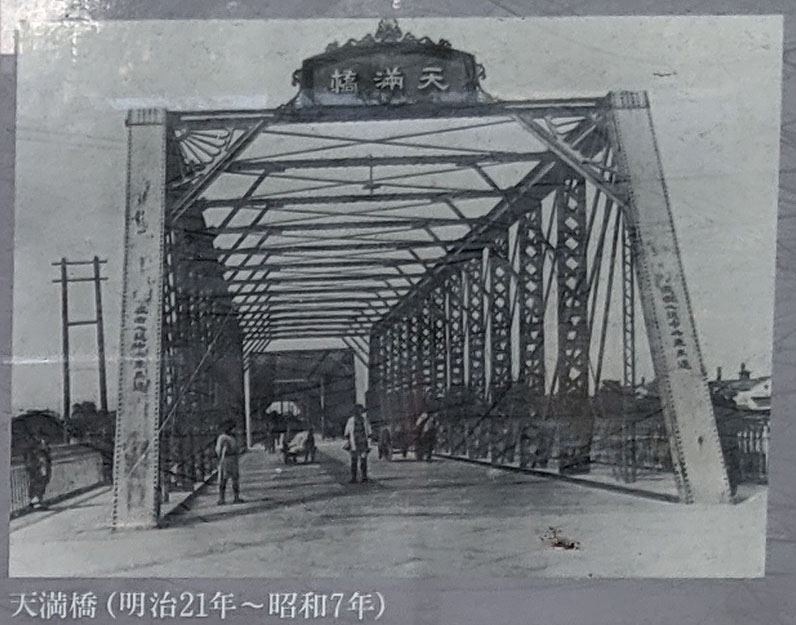
Tenma Bridge (Meiji 21 [1888] – Showa 7 [1932])
“For one who has forsaken this world, even hearing the name Tenma Bridge is terrifying.”
These words appear in Chikamatsu Monzaemon’s Shinjū Ten no Amijima (The Love Suicides at Amijima), where Temma Bridge is depicted as a haunting place. The name plays on the words Temma (天満, the district name) and Temma (天魔, meaning ‘demonic spirit’), adding a dark and poetic nuance to the scene.
The story’s protagonists are Jihei, a paper merchant from Temma, and Koharu, a courtesan from Shinchi. Having decided to end their lives together, they flee from the pleasure district and cross familiar bridges, seeking a place to die.
“We must hurry before the Kyoto-bound boat departs from Fushimi.
For one who has forsaken this world, even hearing the name Temma Bridge is terrifying.
The Yodo and Yamato Rivers become one as they merge into the great Okawa River.
Just as the waters and fish flow together, so shall we, Koharu and I, joined as one.
A single blade, like the Three Rapids of the River of Death.
Let the parting water be our final offering.
What is there to grieve?
Even if we cannot be together in this world, our fate is sealed for eternity.
From this life to the next, and the one beyond—we shall remain husband and wife forever…”
Temma Bridge Today
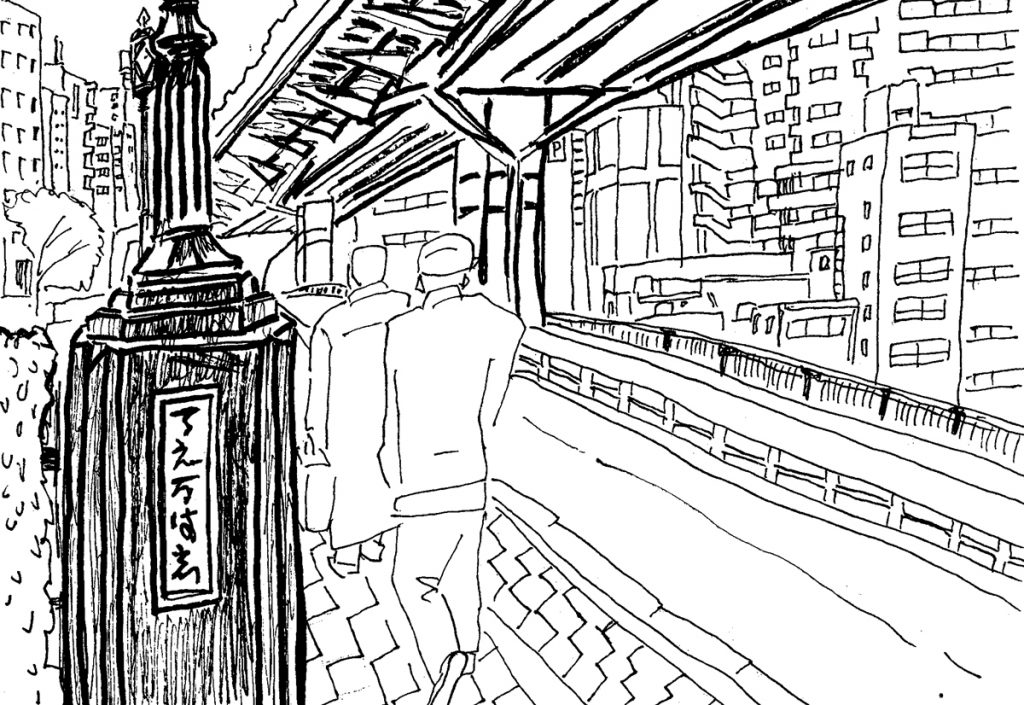
Illustration by Hiroki Fujimoto
The current Temma Bridge was reconstructed in Showa 10 (1935) as part of Osaka’s first urban planning project.
The bridge spans 151 meters in length and 22 meters in width. It is a three-span Gerber-type steel plate girder bridge, with span lengths of 44.5 meters, 61 meters, and 44.5 meters. Among bridges of this type, Temma Bridge is the largest in Osaka.
Because the bridge was originally a tram route, its central section had to support significant loads from streetcars. To accommodate this, the two central main girders were designed with a double-web structure, enhancing their load-bearing capacity.
The gradual height variation of the girders and the balanced vertical and horizontal curves create an aesthetically pleasing structure. According to its designer, Tenma Bridge has the “graceful form of a bird spreading its wings.”
Expansion in Showa 45 (1970): The Elevated Bridge
In Showa 45 (1970), an elevated bridge was added above Temma Bridge. This was necessary due to traffic congestion caused by the bridge’s narrower width compared to adjacent roads and the large intersection at the southern end.
However, widening the existing bridge was challenging, as subway tunnels, Keihan Railway tunnels, and underground walkways ran nearby. The solution was to construct a second bridge directly above the existing one. Interestingly, the strong load-bearing design originally meant for trams now served a new purpose—supporting the weight of the elevated bridge above it.
Structurally, the elevated bridge was designed as a two-chamber, single-box section with a steel deck, using a rigid frame structure that integrates steel girders and steel bridge piers. This modern engineering approach allowed for an efficient use of space while preserving the original bridge below.
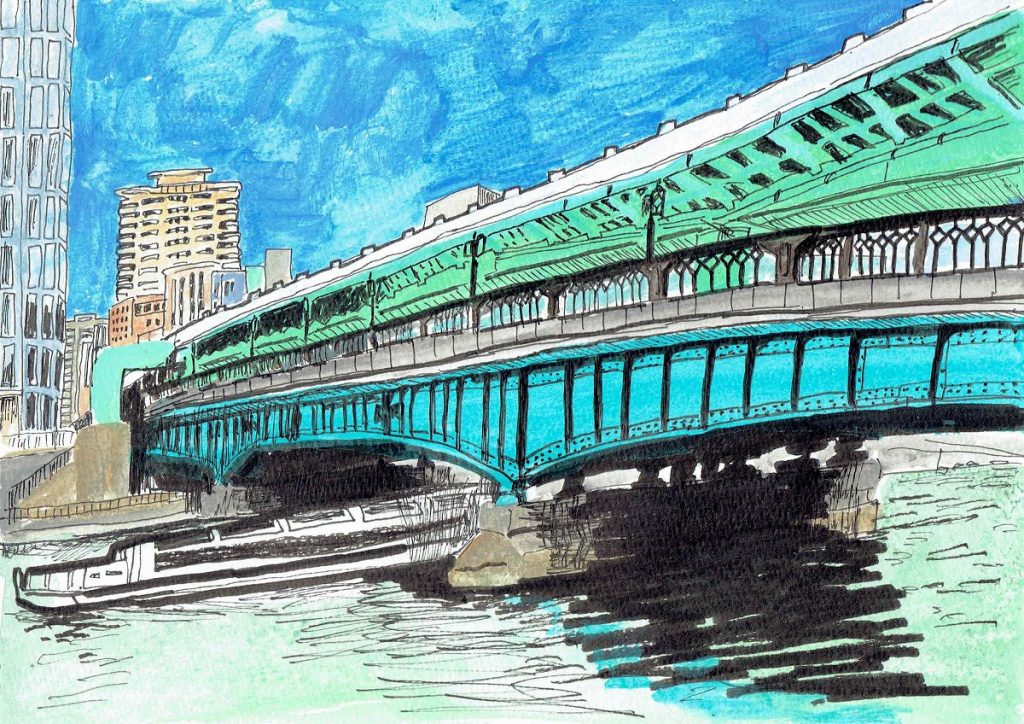
Illustration by Hiroki Fujimoto
Temma Bridge Overview
- Bridge Length: 151.00 m
- Width:
- Upstream Side: 9.50 m
- Downstream Side: 9.50 m
- Type: Girder Bridge (Gerber Girder)
- Completion: Showa 10 (1935)
- Administrative Districts: Kita Ward, Chuo Ward
- River: Okawa (Former Yodo River)
Tenma Bridge spans the Okawa River, formerly part of the Yodo River system. It is conveniently located near Tenmabashi Station on both the Osaka Metro Tanimachi Line and the Keihan Main Line, making it easily accessible.
